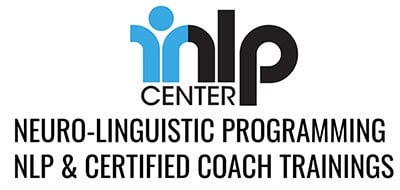How to get coaching clients.
Coaching services that solve specific problems are the most attractive to prospective clients.
Here’s why:
Life coaching, while mainstream, has not been branded over generations. Therefore, no one grew up watching their parents go to life coaches. We’ve all learned when to call a doctor or a plumber, but few people know when it’s time to call a life coach.
We need to let people know when to call!
Many life coaches, upon hanging out a shingle, believe that people will be interested in their services merely because it’s life coaching. Nothing could be further from the truth. As a life coach, you should accept that life coaching has no intrinsic value in the minds of your potential clients.
This isn’t a problem. It simply means that you need to create value in the description of your service. This is how we let the right people know when to inquire. You need to describe the value you offer clients in common language that everyone can identify with.
Since people are most motivated by solving problems that they find hard to live with, this is where we should begin.
Learn how to get coaching clients by answer this key question:
What is the main problem you want to help people solve?
This may be the most important question you could ask yourself as you enter the field of life coaching. When you answer this question, avoid jargon or “coach-speak.” You need to use language that everyone already understands.
Examples of Identifying Problems to Help Clients Solve
Remember, saying you’re a life coach is nowhere near enough to convince people to hire you. You need to give them a compelling reason to do so that hits home for the right client.
Here’s how one life coach, Rebecca, resolved her marketing issue. She was a good coach, well-trained and motivated. When Rebecca finished her life coach training, she built a website and began sharing it with everyone she knew. She had a ton of friends and connections on social media, so Rebecca’s website started getting traffic right away.
Three months later, she still didn’t have any clients. What was going on? Rebecca was describing her coaching service as “life coaching sessions.” She grouped sessions into bundles so people could get a discount if they purchased more than one session at a time, which is smart. But no inquiries.
Rebecca didn’t realize at the time that people do not buy life coaching because its life coaching. Most people have no idea what life coaches do or when to use the service.
Next, Rebecca decided to make her coaching services more attractive by adding in some attractive language. She peppered her site with phrases like: Live an authentic life and discover your genuine self. She knew how important it is to live authentically and considered herself an expert in this area of coaching.
When you arrived at her site, the headline was clear:
Life Coaching to Help You Live an Authentic Life
Three months later, traffic to her site had increased significantly due to a guest posting campaign, but still no clients!
Six months into her new business, she had made no money but had spent a lot on training and web development services.
Rebecca didn’t realize that, like life coaching itself, very few people identify with the phrase live an authentic life. No average person says, “You know what my biggest problem is? I am not living an authentic life.”
Life coaches use this term. People who would benefit from hiring life coaches typically don’t use coach-speak, however. So when they see your offer to help them live an authentic life, they don’t connect with it.
If your offer doesn’t connect with your potential clients, you’ll never hear from them.
How do you get people to move from reading your website to actually contacting you? You’ve got to let them know that you can help them solve their most painful problem – the one that frustrates them all day keeps them up at night.
Rebecca took this to heart and began to drill down into which big problem she loved to help people solve. As she considered the goal of living authentically, she realized something that ultimately turned her business around.
To Rebecca, the main obstacle to living authentically that she loved to help people solve was speaking up, telling the truth, and standing up for yourself. She began to research how people typically spoke about these issues.
After interviewing friends and family, reading dozens of articles online, and perusing online forums, Rebecca also learned that people who have a hard time representing themselves also carry a fear that they would offend people if they were to say what was really on their mind.
Rebecca settled on a name for a new coaching program that proved how to get coaching clients:
How to Stand Up for Yourself without Being a Jerk
She created a 12-session coaching package to go with it and described her services as being the solution to the problem of being scared to stand up for yourself.
When you enter my coaching program, you find it nearly impossible to stand up for yourself, so you get taken advantage of and are misunderstood a lot. When you leave my coaching program, you’re able to speak freely and respectfully, without the fear of offending people. This can change the direction of your entire life!
Rebecca also began writing and promoting blog posts that raised awareness of this problem and offered tips to overcome it. Soon, her newsletter subscriptions were climbing. When she put out a new email to her list, people opened it and clicked to read the latest post on her site. It was working!
But why?
Within a week of creating this new, problem-solving coaching program, Rebecca had her first client. Three months later, she knew her coaching business was going to work. Inquires rolled in regularly because of her new positioning.
Why did it work?
Because potential clients with this problem knew 100% that the coaching program was specific to solving the #1 issue in their lives. Those who had suffered long enough made the inquiry.
Granted, readers who didn’t have a problem standing up for themselves also knew something clearly. These coaching services were NOT for them. And this is exactly what you want to happen. People you can help are inspired. People you can’t help move on.
What is your niche?
Your niche consists of people who are living with the problem that you help people solve. There may be consistent demographics (age, gender, location, education, profession) but demographics are less relevant.
When you have a coaching package that credibly solves a painful problem, people will come. They will represent various demographics. The problem they suffer is the common element. This is exactly what you want!
To discover your niche, you can follow these guidelines:
1. Identify a general area of life. At this point, don’t worry about using coach-speak or uncommon language.
For example:
- Self-esteem
- Relationships
- Authenticity
- Leadership
- Financial
- Time Management
2. Ask yourself, “What’s the main problem I want to help people solve in this area of life?”
- Brainstorm a list of potential problems.
- Interview people to see how well they relate to the problems you’ve listed.
- Search for articles or books about the problem.
- Visit online forums and discussion groups to read how people refer to the problems.
You need to get into the mindset of average people who are discussing the problems you want to help them with so that when you describe your coaching, you are talking their language.
This is how a coaching service like Live an Authentic Life gets turned into How to Stand Up for Yourself. One of these sells coaching because it’s a solution to a specific problem, communicated in a relatable fashion. The other doesn’t sell because too few people realize it has anything to do with them.
Who is your ideal client?
Your ideal client is someone who experiences the following three things:
- They are suffering from a problem that they find very difficult to live with, but have not been able to resolve on their own.
- When they read your website or talk to you, they know that you get it. You actually understand what they’re going through.
- Through interacting with you, the suddenly have hope for a long-term solution.
You need to give the right people (#1) both understanding and hope before they will hire you to coach them. If you show them how well you understand but offer no hope for a solution, they will appreciate you but not hire you. If you offer hope for a solution but don’t demonstrate that you understand them, they won’t realize that your solution applies to them.
In addition to knowing how to get coaching clients, you might also benefit from:
The iNLP Center Life Coach Career Aptitude Quiz



